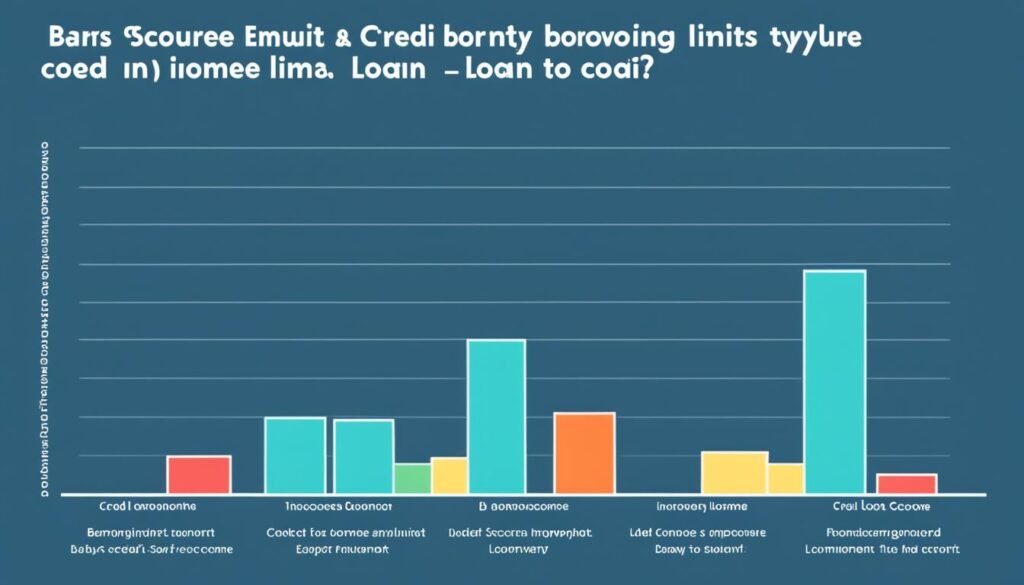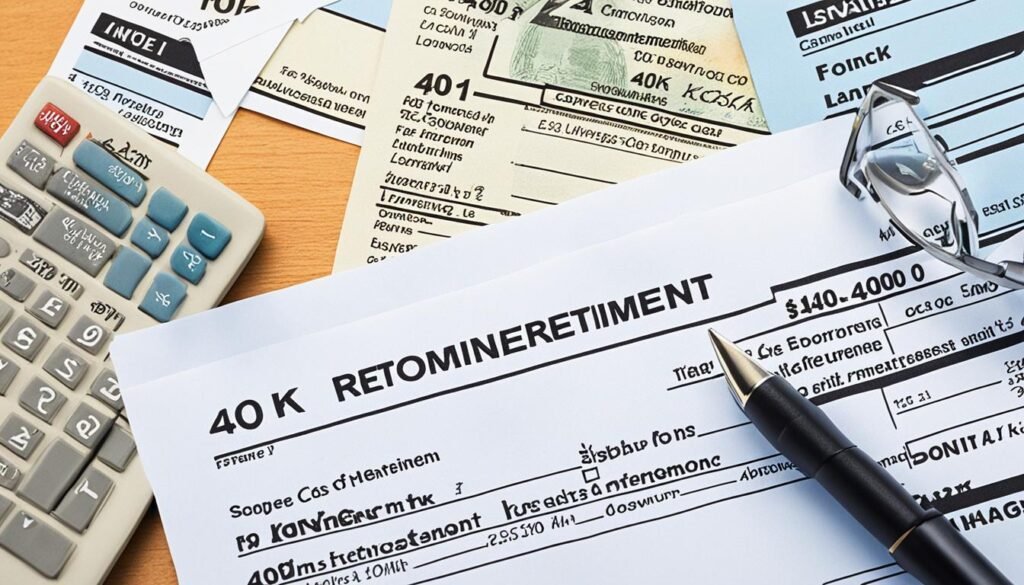How Much Of A Personal Loan Can I Get When it comes to personal loans, one of the first questions borrowers ask is how much they can borrow. The loan amount you are eligible for can vary depending on several factors, including your credit score, income, and debt-to-income ratio. Understanding these factors can help you determine how much of a personal loan you can get and plan your borrowing responsibly.
Key Takeaways: How Much Of A Personal Loan Can I Get
- The loan amount you can qualify for depends on your credit score, income, and debt-to-income ratio.
- Review your budget before applying for a loan to determine how much you can comfortably afford to borrow.
- Comparing loan offers from different lenders can help you find the best terms and loan amount that suits your needs.
- Consider alternatives to personal loans, such as credit cards, home equity loans, and peer-to-peer lending.
- Borrow responsibly and have a clear repayment strategy to avoid financial difficulties.
Factors That Determine Loan Amount
Lenders take several factors into account when reviewing loan applications. These factors include current debts, income, credit score, and employment history. The amount of active debt, known as the debt-to-income ratio, plays a significant role in determining the loan amount.
A higher income and a good credit score can increase the likelihood of qualifying for a larger loan amount.
Data Points Considered:
- Current debts
- Income
- Credit score
- Employment history
Your current debts are a crucial consideration for lenders. They assess your debt-to-income ratio to evaluate your ability to repay the loan. Higher levels of debt can impact your loan amount as it indicates a higher risk of default. Minimizing current debts and improving your debt-to-income ratio can boost your chances of securing a higher loan amount.
Income plays a vital role in determining your loan amount. Lenders want assurance that you have a stable source of income to make timely repayments. A higher income demonstrates financial stability and the capacity to handle larger loan amounts.
Your credit score also influences the loan amount you can qualify for. A good credit score indicates responsible credit management and entices lenders to offer higher loan amounts at competitive interest rates. On the other hand, a low credit score may limit your borrowing capacity or increase the interest rates.
Furthermore, your employment history is an important factor considered by lenders. It helps them evaluate your job stability and income continuity. A consistent employment record can improve your chances of obtaining a larger loan amount.
“Having a higher income and a good credit score can significantly increase your chances of qualifying for a larger loan amount.” – Financial Advisor, Sarah Thompson
| Factors Considered | Impact on Loan Amount |
|---|---|
| Current Debts | Higher debt-to-income ratio may limit loan amount |
| Income | Higher income increases loan amount potential |
| Credit Score | Good credit score improves borrowing capacity |
| Employment History | Stable employment enhances loan amount eligibility |
By understanding the factors that determine loan amounts, you can take steps to improve your eligibility and increase your borrowing potential. Managing your debts, maintaining a steady income, and building a strong credit history are all essential in securing the loan amount you need.
Loan Amounts Offered by Lenders
When it comes to personal loans, the loan amounts offered by lenders can vary widely. Whether you’re looking to borrow a small amount for a specific purpose or a larger sum to cover major expenses, understanding the loan minimums and loan maximums set by personal loan lenders is essential.
Some lenders have loan minimums as low as $600, making it a convenient option for those seeking a smaller loan. On the other hand, there are lenders that require borrowers to take out larger amounts, such as $7,000 or more. Therefore, it’s important to determine the loan minimum that fits your needs and financial situation.
Similarly, loan maximums can range from $20,000 to $100,000, depending on the lender. This range allows borrowers to access a significant amount of funds for various purposes, whether it’s home improvements, debt consolidation, or other significant expenses.
By comparing loan offers from different lenders, you can find the best terms and loan amount that suits your needs. Making an informed decision based on your financial goals and repayment capabilities is crucial to ensure a smooth borrowing experience.
| Lender | Loan Minimum | Loan Maximum |
|---|---|---|
| Lender A | $600 | $30,000 |
| Lender B | $1,000 | $50,000 |
| Lender C | $2,000 | $100,000 |
Table: Loan Minimums and Maximums by Lenders
Factors That Influence Borrowing Limit

When applying for a personal loan, several factors come into play that can influence the borrowing limit that you are eligible for. It is essential to understand these factors to better gauge your loan potential and make informed borrowing decisions.
Credit Score: Your credit score plays a significant role in determining the borrowing limit for a personal loan. Lenders prefer borrowers with a good credit score as it indicates a history of responsible financial behavior. A higher credit score increases your chances of qualifying for a larger loan amount.
Current Debts: Your current debts and debt-to-income ratio also impact the borrowing limit. Lenders assess your debt burden to determine your ability to repay the loan. Ideally, a lower debt-to-income ratio indicates a stronger financial position and may allow for a higher loan amount.
Income Level: Lenders consider your income level to evaluate your capacity to repay the loan. A higher income suggests a greater ability to handle loan obligations, which can positively influence the borrowing limit.
Loan Purpose: The purpose of the loan can also impact the borrowing limit set by lenders. Some loan purposes, such as debt consolidation or home improvement, may be viewed more favorably by lenders, potentially increasing the loan amount available to you.
By understanding these factors and their impact on your borrowing limit, you can better assess your loan eligibility, determine an appropriate loan amount, and approach lenders with confidence.
Loan Eligibility and Affordability

When considering a personal loan, it’s essential to determine your loan eligibility and ensure affordability. This involves evaluating various factors, such as the total monthly cost of the loan, loan term, and interest rate.
Calculating your loan eligibility begins with assessing your finances and understanding how much you can comfortably borrow. To do this, take a close look at your monthly budget and consider your income, expenses, and any existing debt obligations.
While the loan eligibility criteria may vary between lenders, it’s important to consider the total monthly cost of the loan. This includes not only the principal loan amount but also the interest rate, fees, and any additional charges that may apply.
Additionally, the loan term plays a significant role in determining affordability. A longer loan term may result in lower monthly payments, but it also means paying more overall due to the accrual of interest over time. Shorter loan terms may lead to higher monthly payments but can help save on overall interest costs.
One useful tool to help determine loan affordability is a personal loan calculator. This calculator allows you to input various loan parameters, such as loan amount, interest rate, and loan term, to estimate your monthly payments and total interest paid over the life of the loan.
Using a personal loan calculator can provide valuable insights into how different loan options may impact your finances. It can help you make an informed decision based on your budget and repayment capability.
By carefully evaluating your loan eligibility and considering the total monthly cost, loan term, and interest rate, you can ensure that you choose a personal loan that aligns with your financial goals and provides manageable repayments.
Alternatives to Personal Loans

When it comes to financing, personal loans are not the only option available. Depending on your needs and financial situation, there are several alternatives worth considering:
Credit Cards
Credit cards can be a convenient option for smaller expenses. They offer flexibility and ease of use, allowing you to make purchases and pay them off over time. However, it’s important to use credit cards responsibly and pay off the balance in full each month to avoid high interest charges.
Home Equity Loans

If you are a homeowner, a home equity loan can be a viable alternative. This type of loan allows you to borrow against the equity in your home. Home equity loans often have lower interest rates compared to personal loans, making them an attractive option for larger expenses like home renovations or debt consolidation.
401(k) Loans

If you have a 401(k) retirement account, you may be eligible to take out a loan against your savings. 401(k) loans typically have lower interest rates and more flexible repayment terms compared to personal loans. However, it’s important to consider the impact on your long-term retirement savings before opting for this type of loan.
Peer-to-Peer Lending

Peer-to-peer lending platforms connect borrowers with individual investors who are willing to fund their loan requests. This alternative allows borrowers to access funds outside of traditional financial institutions. Peer-to-peer lending can offer competitive interest rates and flexible terms, making it an attractive option for individuals looking for personal loan alternatives.
Each alternative has its own advantages and considerations, so it’s important to carefully evaluate your options and choose the one that aligns best with your financial goals and needs.
The Importance of Responsible Borrowing

While personal loans can provide valuable financial assistance, it is essential to approach borrowing responsibly. By considering factors such as loan affordability, debt management, and repayment strategy, you can ensure a smooth borrowing experience without compromising your financial well-being.
Understanding Loan Affordability
Prior to obtaining a personal loan, it is crucial to evaluate your financial situation and determine how much you can afford to borrow. This assessment involves carefully analyzing your income, expenses, and existing debt obligations.
“Borrowing only what you can afford to repay and having a clear repayment strategy is essential.”
By calculating your debt-to-income ratio, you can understand the maximum amount you can comfortably allocate towards loan repayments. This approach helps prevent overborrowing and minimizes the risk of falling into unsustainable debt.
Effective Debt Management
Responsible borrowing involves proper debt management techniques. It is crucial to prioritize your debt obligations and ensure that loan repayments are made on time. Late or missed payments can negatively impact your credit score and future borrowing opportunities.
Consider creating a budget that allows you to allocate sufficient funds towards loan repayments. This will help you stay organized, avoid unnecessary fees or penalties, and maintain a positive financial track record.
Developing a Repayment Strategy
To avoid financial difficulties, it is important to formulate a clear repayment strategy. Establishing a realistic timeline for repaying your personal loan can help you stay on track and minimize the overall cost of borrowing.
Consider utilizing loan repayment calculators to determine the ideal loan term and monthly payment amount based on your financial capabilities. This strategy allows you to establish a repayment plan that aligns with your budget and minimizes the risk of default.
Comparing Lenders and Prequalification
When seeking a personal loan, it is beneficial to compare multiple lenders to find the best terms and conditions. Evaluating interest rates, fees, and repayment terms can help you secure a loan that aligns with your financial goals.
Additionally, consider utilizing prequalification services provided by lenders. Prequalification allows you to determine your eligibility for a loan without impacting your credit score. This process enables you to make informed decisions when selecting a lender and ensures that you are pursuing loan options that are suitable for your financial circumstances.
By following these principles of responsible borrowing, you can enjoy the benefits of personal loans while effectively managing your debt and securing a brighter financial future.
Loan Repayment Example

Understanding how loan repayment works is crucial for effectively managing your personal finances. The loan term, monthly payment, and total interest paid can vary depending on the terms of your loan. Let’s take a closer look at an example to better illustrate this.
Suppose you borrow $10,000 with a 7% interest rate. The table below demonstrates how different loan terms can impact your monthly payment and total interest paid over the life of the loan:
| Loan Term | Monthly Payment | Total Interest Paid |
|---|---|---|
| 3 years | $308.80 | $1,112.80 |
| 5 years | $198.04 | $1,882.40 |
| 7 years | $153.24 | $2,874.80 |
As you can see, opting for a shorter loan term will result in higher monthly payments but less total interest paid. On the other hand, choosing a longer loan term will lead to lower monthly payments but higher overall interest costs. It’s essential to carefully review the repayment details and select a loan term that aligns with your financial situation and goals.
Keep in mind that this example serves as a demonstration and may not reflect the exact terms you receive from a lender. Always consult with the lender to obtain accurate and personalized information for your specific loan.
How To Qualify For A Larger Loan Amount
How Much Can You Get A Personal Loan For?
Conclusion
When it comes to determining the amount of a personal loan you can get, several factors come into play. Your credit score, income, and the specific qualification criteria set by lenders all play a role in determining your loan eligibility. To get a clearer understanding of how much you qualify for, it’s essential to utilize loan amount estimators offered by various lenders and compare loan rates. This will help you make an informed decision and find the loan amount that aligns with your financial situation.
However, it’s crucial to approach borrowing with responsibility. Before taking out a personal loan, carefully consider your budget and repayment capability. Borrowing within your means will help you avoid potential financial risks and ensure a smoother loan repayment journey. By analyzing your financial needs and comparing loan rates, you can find the best loan option that suits your specific requirements.
Remember, responsible borrowing starts with understanding your financial situation and priorities. Utilize loan amount estimators to get an idea of how much you qualify for, review the loan qualification criteria set by lenders, and thoroughly compare loan rates. Armed with this information, you’ll be empowered to make the right financial decision and embark on a successful borrowing journey.
FAQs
Q: How much of a personal loan can I qualify for?
A: The amount you can borrow with a personal loan depends on various factors such as your credit score, monthly income, and existing debts.
Q: How can I determine how much personal loan I can get?
A: You can use a personal loan calculator provided by most personal loan lenders to estimate the larger loan amount you may qualify for based on your financial information.
Q: What is the best way to get approved for a larger personal loan?
A: To qualify for a larger loan amount, you can work on improving your credit score, paying off outstanding debts, and increasing your monthly income.
Q: Are there specific personal loans for bad credit borrowers?
A: Yes, some lenders offer personal loans for bad credit applicants, but these loans may come with higher interest rates than personal loans for borrowers with good credit.
Q: Can I use a personal loan for debt consolidation purposes?
A: Yes, a personal loan amount can be used for debt consolidation, where you can repay your credit card debts or other loans with a single personal loan payment.
Q: Do personal loans require collateral like secured loans?
A: Most personal loans are unsecured, meaning they do not require any collateral, unlike secured loans such as auto loans or home loans.
Q: What factors are considered when applying for a personal loan?
A: When applying for a personal loan, lenders consider your credit score, monthly income, existing debts, and the purpose of the loan to determine if you qualify and how much money you can get approved for.
